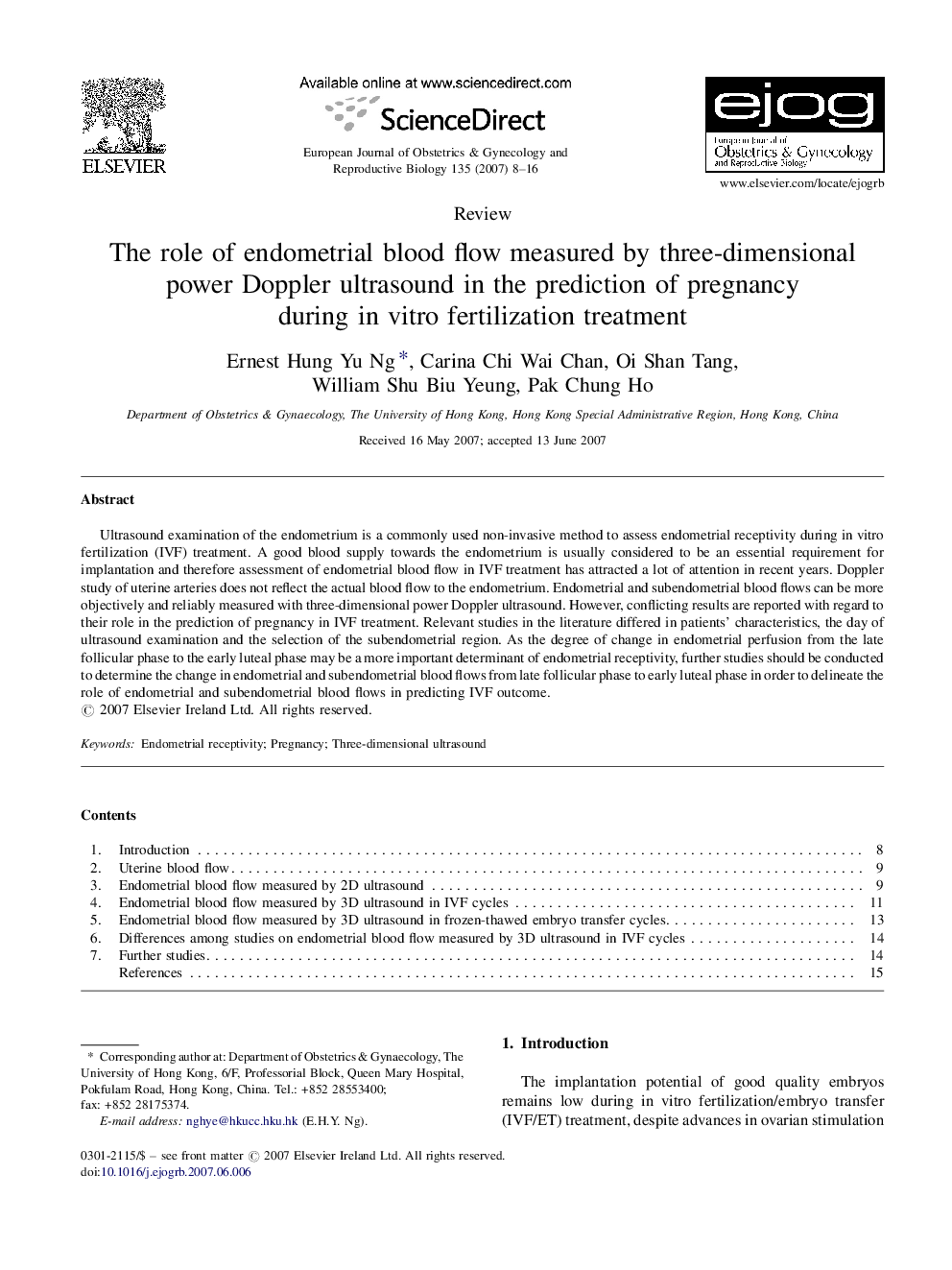| Article ID | Journal | Published Year | Pages | File Type |
|---|---|---|---|---|
| 3922227 | European Journal of Obstetrics & Gynecology and Reproductive Biology | 2007 | 9 Pages |
Ultrasound examination of the endometrium is a commonly used non-invasive method to assess endometrial receptivity during in vitro fertilization (IVF) treatment. A good blood supply towards the endometrium is usually considered to be an essential requirement for implantation and therefore assessment of endometrial blood flow in IVF treatment has attracted a lot of attention in recent years. Doppler study of uterine arteries does not reflect the actual blood flow to the endometrium. Endometrial and subendometrial blood flows can be more objectively and reliably measured with three-dimensional power Doppler ultrasound. However, conflicting results are reported with regard to their role in the prediction of pregnancy in IVF treatment. Relevant studies in the literature differed in patients’ characteristics, the day of ultrasound examination and the selection of the subendometrial region. As the degree of change in endometrial perfusion from the late follicular phase to the early luteal phase may be a more important determinant of endometrial receptivity, further studies should be conducted to determine the change in endometrial and subendometrial blood flows from late follicular phase to early luteal phase in order to delineate the role of endometrial and subendometrial blood flows in predicting IVF outcome.
